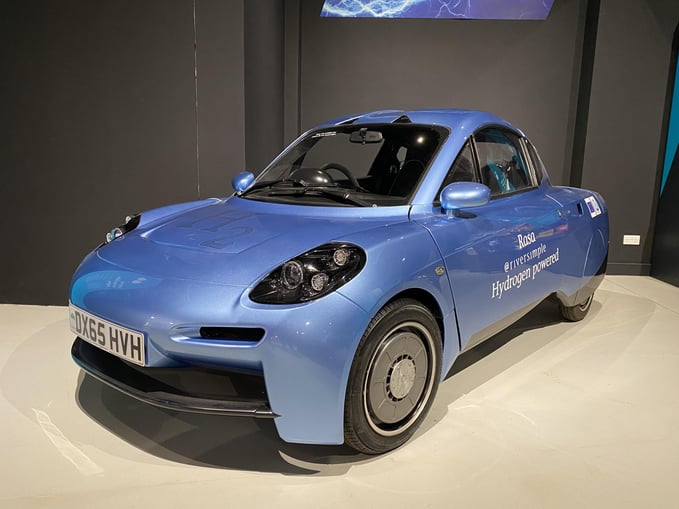J12 M40
British Motor Museum
J12 M40
British Motor Museum

Riversimple is a manufacturer of hydrogen powered cars based in Wales and it unveiled its prototype, the two-seat Rasa in 2016.
The Rasa has a range of 300 miles on 1.5 kg of hydrogen, and the equivalent of 250 mpg with a top speed of 60 mph.
A hydrogen fuel cell comprises two electrodes - a negative anode and positive cathode. The two electrodes sit either side of the electrolyte. A fuel cell will produce electricity as long as a “fuel” is supplied. The fuel here is hydrogen and fed to the anode and plain air is directed to the cathode. A catalyst (a substance to speed up a reaction) separates hydrogen into protons and electrons, taking different paths to the cathode. The electrons follow an external
circuit, creating electricity. The protons migrate through the electrolyte. At the cathode they reunite with oxygen and electrons producing water and heat - the two waste products.
Although the car doesn’t have battery storage, when the car brakes the kinetic energy is captured as electricity and stored in a bank of ‘super-capacitors’. Unlike a battery, these can take a huge charge very quickly, but they don’t store a lot of energy. The Rasa will not be sold to customers but offered on a monthly subscription; something many other car manufacturers are moving towards.

British Motor Industry Heritage Trust, Registered Charity in England & Wales: 286575
Banbury Road
Gaydon
Warwickshire
CV35 0BJ
If using a Sat Nav for directions we recommend you enter the British Motor Museum as a point of interest rather than using the postcode.














.png)


